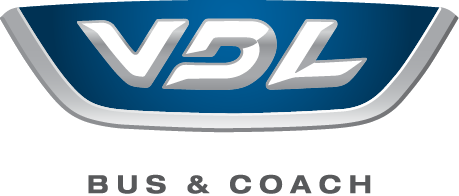
VDL expands Charging Test Centre with new charging technology
In cooperation with Siemens, VDL will investigate how vehicle technologies, energy storage and charging systems work together. The VDL Charging Test Centre has therefore been expanded with new charging technology to provide more insight into smarter, more efficient use of the existing power grid and the bi-directional charging of heavy vehicles. Bi-directional charging means that electric vehicles are not only able to draw energy from the power grid and energy storage system but also to deliver energy back to these systems. The VDL Charging Test Centre is located on the premises of VDL ETS (Enabling Transport Solutions) in Valkenswaard.
VDL is going to use this technology for purposes such as boosting interoperability – the mutual communication and exchange of information – of heavy electric vehicles and charging infrastructure. Through this initiative, VDL intends to gain greater insight into the entire power supply chain for electric heavy vehicles so that more sustainable mobility solutions can be developed that ultimately contribute to a successful energy transition.
“Deployment of heavier e-vehicles also involves technical issues such as the increasing energy demand and unpredictable load on the power network,” said Menno Kleingeld, Managing Director VDL ETS. “It is important to use alternatives, both for smarter planning of charging times and so energy can be temporarily stored in a buffer. This temporary buffer can then supplement the available capacity of the power grid to deliver power back to the vehicles during periods of peak load. This new technology allows us to investigate how we can reduce the load that charging sessions place on the power grid and how we can properly store the available energy capacity and distribute it based on demand.”
Smart energy management
Three Siemens fast charging stations, in combination with a VDL energy storage system, have been installed at the VDL Charging Test Centre. The data from these systems are managed via a ‘cloud-based’ energy management application. Using the data from these systems, the charging of the vehicles can be actively controlled. A special ‘switching matrix’ allows the available power capacity to be flexibly deployed and used.
Menno Kleingeld: “This joint project with Siemens fits within the VDL strategy and vision in the area of e-mobility. Our innovation activities are part of a larger programme in which we develop new platforms and building blocks, in close cooperation with our strategic partners. These partnerships are a prerequisite for continuing to develop mobility solutions for the future.”
“We are excited to collaborate with VDL on this innovative project, which brings us a step closer to making e-mobility more flexible and efficient,” said Monique Mertins, Head of Charging Infrastructure for eBus and eUtility Vehicles at Siemens Smart Infrastructure. “Three of our latest 150 kilowatt (kW) fast charging stations are being used in Valkenswaard. The charging electronics can be temporarily interconnected, making it possible to charge three vehicles in parallel with a capacity of 150 kW each, or one vehicle particularly rapidly up to 450 kW using High-Power Charging (HPC). This means power can be adjusted flexibly and the charging infrastructure optimized for depots with different requirements.”

Bi-directional charging
Two second life battery systems from an electric bus are used for the temporary buffering of power fed back from the heavy electric vehicles. On average, these batteries still have more than 80% of their original capacity and can function perfectly as a power storage system.
Thanks to this technology, buses can be tested more efficiently. At present, e-buses and e-trucks often have to drive longer than necessary, to completely discharge the batteries. Thanks to bi-directional charging, this is no longer necessary and the energy used to charge the vehicle batteries can be returned to the energy storage system.
VDL ETS
VDL ETS (Enabling Transport Solutions) is part of VDL Groep and focuses on research, development, prototyping and testing of new concepts, in particular the transport-related activities of VDL companies. The objective is to develop environmentally-friendly and innovative hardware and software solutions in fields such as electric transport (e-mobility), battery technology, charging infrastructure, energy storage, automated guided vehicles (AGVs), and guidance and navigation technology. VDL ETS employs approximately one hundred people.
